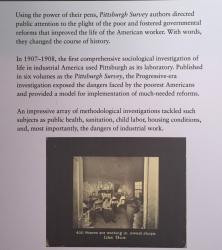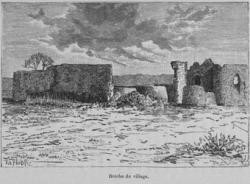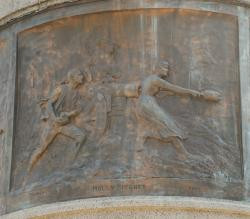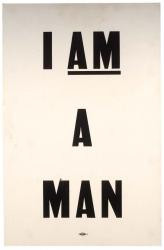Kate Harris
Social Studies teacher
Pittsburgh CAPA
Middle School (13 to 15 years old), High School (16 to 18 years old)
Teacher/Educator
Language Arts And English, Civics, Literature, Cultures, Economics, Social Studies, Geography, Writing, US History, Arts, Other
I'm a history-lover, art fan, and bookworm. I taught high school history (U.S. History and World Religions) for ten years in North Carolina, teach currently in Pittsburgh, PA, and am working to help teachers make the most of this new resource!
Kate Harris's collections
Ekphrastic Poetry Lesson
<p>According to <a href="https://www.poetryfoundation.org/resources/learning/glossary-terms/detail/ekphrasis" target="_blank">the Poetry Foundation</a>, "An ekphrastic poem is a vivid description of a scene or, more commonly, a work of art. Through the imaginative act of narrating and reflecting on the "action" of a painting or sculpture, the poet may amplify and expand its meaning"</p><p>This collection is based on a lesson plan from the Smithsonian American Art Museum, which guides users through the process of using artwork to inform and inspire poetry. Strategies for developing original poems, sample ekphrastic (art-inspired) poems, and suggested artworks are included to stimulate thinking.</p><p>tags: creative writing, art, poetry, poems</p>
 Kate Harris
Kate Harris
9
The Pittsburgh Survey
<p>This topical collection contains resources related to the <a href="https://en.wikipedia.org/wiki/The_Pittsburgh_Survey" target="_blank">Pittsburgh Survey</a>, a groundbreaking Progressive Era research study of the living and working conditions in turn-of-the-century Pittsburgh. This study, published in books and magazines, led to the passage of worker-safety laws and encouraged other Progressive Era reforms. The images, readings, and links to archival materials in this collection can be used to support exploration of the questions below.</p><p>Guiding Questions:</p><ul><li>In what way did the Pittsburgh Survey reflect Progressive Era concerns, strategies, and achievements?</li><li>How did Progressive Era beliefs about social change differ from those held previously?</li></ul><p>Tags: Progressives, child labor, worker safety, scientific management, muckrakers, reform movement, Lewis Hine, Paul Kellogg, Crystal Eastman. Joseph Stella, Homestead, Pittsburgh, Pennsylvania</p>
 Kate Harris
Kate Harris
13
Negro League Baseball
<p>This is a topical collection of resources related to the Negro Leagues. Students and teachers can use this collection to supplement United States history lessons from after the Civil War through the mid 20th century. Sports often echoes social and cultural changes that take place in the nation and reflect the norms of the times. </p><p>tags: baseball, civil rights, African-Americans, Homestead Grays, Satchel Paige, Hank Aaron, Buck Leonard, Josh Gibson, Cuban Giants</p>
 Kate Harris
Kate Harris
13
Booker T. Washington and the Tuskegee Institute
<p>This collection includes photographs and paintings that reveal information about Booker T. Washington's strategy for achieving civil rights for African-Americans, and about the subjects taught at Tuskegee. It is intended as an introductory activity on the subject, to be completed by students.</p><p>Tags: point of view, Reconstruction, Tuskegee Institute, civil rights, segregation, Gilded Age, cause effect</p>
 Kate Harris
Kate Harris
5
The Tuskegee Airmen
The Tuskegee Airmen were the first African-American fighter pilots in the United States military. This collection describes their work and training during an era of segregation, as well as their contributions to World War Two, through videos, photographs, art, and poetry. At the end of the collection, students are asked to write a poem of their own using one of the artifacts as inspiration.
 Kate Harris
Kate Harris
7
World War II Lesson Plans and Interactives
<p>Collection of lesson plans and interactive websites related to World War II from the Smithsonian Institution.</p>
 Kate Harris
Kate Harris
13
I Am a Man--We Are Human
This collection traces how a powerful phrase and its variations have been adopted by different voices in United States history.
Questions to consider:
-How is the phrase (and/or design of the original poster) used? How do the changes and adaptations it has undergone reflect different time periods and issues in United States history?
-Why has the phrase "I am a Man" had such staying power? Alternately, why has "We Are Human" been adopted?
-How do the above phrases reflect or reject concepts like "separateness," "personal identity," or "inclusion"?
-Why do you think many artists are drawn to the phrase and design? Do you think the artists expect viewers to recognize the influence of the original work? Why or why not?
-Why is the verb underlined? How would it change if another word were emphasized?
-What other examples could be included in this collection? This collection focuses primarily on visual interpretations of the phrase. Can you think of literary or pop culture examples?
Tags: Ernest Withers, Dread Scott, Ferguson, Abolition, Sojourner Truth, Memphis, sanitation workers, immigration reform, refugee crisis, Hank Willis Thomas, protest, sign, placard, broadside, civil rights
 Kate Harris
Kate Harris
9








